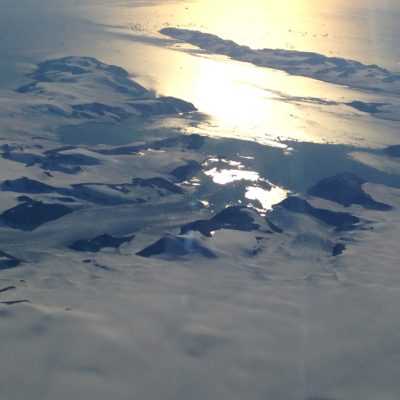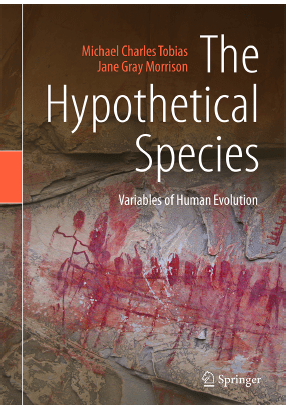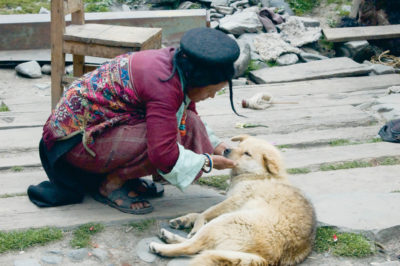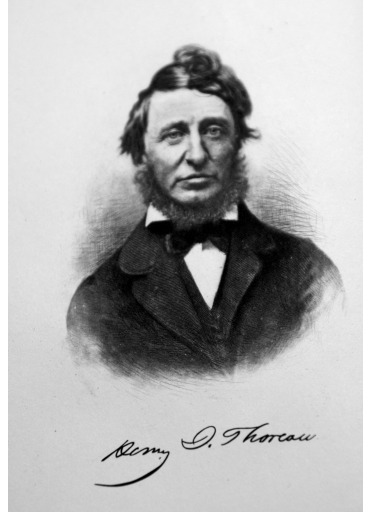Said Picasso (after David Hume and Blaise Pascal), “Everything you can imagine is real.”
Geoffrey Holland: You write ‘For most of our history, we have taken, not given to the Earth.’ Has time run out on that paradigm? If so, can you summarize the evidence?
Jane Morrison /Michael Tobias: All the evidence to date, which our species is in grave danger of habituating to, is shattering to any rational being or tender heart. We’re referring to such recent data sets as those published by IPBES (the Intergovernmental Platform on Biodiversity and Ecosystem Services), chaired by Robert Watson, probably the most extensive global overview of the current extinction crisis ever launched. But also the summaries from such diverse organizations as the Yale Environment 360, the UNEP emphasis on this “Decade on Biodiversity to stem loss of ecosystems,” the Conservation International monitoring of the 36 biological hotspots, and then all of the research from activist think tanks like PETA, People for the Ethical Treatment of Animals. In The Hypothetical Species, we focus on a plethora of ecological deficits and illiteracy, as well as the history of the cumulative environmental abuse by this one ungainly, hominin, H. sapiens, and the conclusions one is tempted to reach are devastating. They are centered around data sets pertaining to cruelty, destruction, irrefutable loss of habitat and their genetic repositories otherwise given to splendid biodiversity, and a holocaust of mass animal and plant annihilation by humans. This word, annihilation, was applied unstintingly by Gerardo Ceballos, Anne H. Ehrlich and Paul R. Ehrlich in their graphic assessment of such destruction in their book, The Annihilation of Nature: Human Extinction of Birds and Mammals (Johns Hopkins University Press Books, 2015). Back in the early 1990s, we were describing this systemic collision of humans and all other species as “World War III” – the war we humans were and are waging against the planet. It served as a fitting title for a book and film that we put out there, examining the impact of the continuing human population explosion on biodiversity and general quality of life for all sentient beings.
Decades later, today, the syndromes of ecological infliction by our kind have escalated faster and more devastatingly than probably anything the scientific community ever quite imagined. When we think about one of the most salient fundaments of human experience, of giving and receiving, of basic mammalian nurturance, the joy and necessity of sharing, it is clear that our behavioral inconsistencies with respect to the biosphere are glaring.

GH: You discuss a monumental paradox at work. In essence, the more successful humans are as a species at adapting to the declining conditions we ourselves have imposed, the more likely we will ultimately destroy ourselves and the biosphere we depend on. Can you elaborate on that?
JM/MT: You’ve stated it well. We would add that any and all logical inferences that can be gleaned from this ecological paradox – humanity’s behavioral cul-de-sac (ably diagnosed by historian Arnold Toynbee in his 1976 masterpiece, Mankind and Mother Earth; and more recently analyzed in 2011 in Collapse by Jared Diamond) – are, if viewed with a degree of perspective, illogical. This places our species, and all others, in a most precarious context. The mathematics that follow upon coherent as well as incoherent systems are now working very much against us in almost any future biological scenario.
That suggests that the only way out of the paradox would be to embark upon the most selfless turnabout in our short history. But there is only meager statistical evidence to suggest that our species collective (we’re not speaking of individuals, here) is capable of reversing its reckless narcissism.
GH: You mention the philosopher John Dewey, and attribute to him the idea that, ‘Friction is the engine of all creation.’ If this is so, could the undue stress we are imposing on our planet end up contributing to our transformation and renewal?
JM/MT: Organisms that evolve in harsh circumstances, extremophiles in thermal vents or under ice, for example, show the kind of biological latitude and resiliency that gives us some notion of what so much new human ecological re-engineering will have to account for, by way of providing both the qualities of buffering adversity, but also the know-how to work with it. But such qualifications have always been intrinsic to engineering. The human story has unambiguously embraced domination of others through tool use, certainly since the time of various Neolithic, technological shifts – like agriculture – during the Holocene. Genetic engineering, with its endless lures, codifies an impulse which may, in some future, be viewed as a frantic, redemptive impulse at the eleventh hour for our species.
But ecological redemption that comes about as a result of all the stress and discord humans have meted out, may or may not contain fertile, practical or ethical properties of true reciprocity.
There is no question that the instantaneity of stress via social media and 24-hour news cycles is giving us pause; possibly new kinds of psychological tools to grapple with the mess we have made on this planet. But there is still very little evidence that we can engender a generalized human kindness towards others, as opposed to the classic melancholia-saturated modalities of self-interest ruthlessly driving human civilization. There are few exceptions to that record of destruction.

This is why we called our last two books The Theoretical Individual, and The Hypothetical Species. We’re looking to identify consensus mechanisms that may be vulnerable, in the best sense, to whatever one is prepared to make of evolution, both in individuals and amongst collectivities.
GH: What is the recapitulation paradigm, and what can we learn from it?
JM/MT: We deal at some length with the very brilliant and complicated Ernst Haeckel, particularly his fascination with deep sea organisms, as engraved in his masterful Kunstformen der Natur (Art Forms in Nature, published in 1904). He made a monumental contribution to a philosophy of ecological beauty that was concerned with primordial nature, about which he also theorized in respect to microorganisms not yet discovered in his time, only theorized; but he believed such creatures – hybrid or otherwise – would be discovered and found to be ancestral to a purposeful evolution.
“Purpose” and “evolution” were two words that were fated to ignite enormous controversy, as they do to this day. His Social Darwinism, characterized as “polygenetic,” has been duly condemned in our time; deemed a form of racism. Even the late Stephen J. Gould suggested that Haeckel’s otherwise innocent musings on the silica skeletons of protozoan Radiolaria somehow became fuel for the Nazis. It’s a reach, we believe. Haeckel was a Renaissance man, a poet, an explorer. A product – like Darwin or John Muir – of his time. His most famous phrase, of course, was “ontogeny recapitulates phylogeny” and what he was trying to address was the perception of parallels in embryology across species boundaries. He borrowed his theories from the earlier Johann Friedrich Meckle and Étienne Serres, and simply asked that we reflect both upon the beauty and the (critically instructive) communitarian strengths exhibited in the vast reaches of the largely unknown marine biomes. Various species evolved over hundreds of millions of years in darkness (to human eyes), forming a collective reality entirely alien to humanity yet fundamental to our own existence. One tenable model of stable community building appears crucial to the durability of species like Stromatoporoids and lungfish.
What really stands out in the work of Haeckel are his inspiring concepts connecting the potential of the individual to that of the species. This is, indeed, a conundrum that continues to elude philosophical or scientific certainty; a question we continually explore in many of our works: If the individual can make remarkable, personal life-choices and changes, based upon ethical and practical considerations, why can’t that person’s entire species do the same? What has to happen for nearly 7.7 billion Homo sapiens to embrace consistent ecological altruism and virtue? For all of his many flaws, this appears to be the most important and lasting question that follows upon the life of Ernst Haeckel and his recapitulation paradigm, particularly when one looks at his gorgeous paintings in the wake of the famed Challenger Expeditions (1873-1876).
What remains clear about Haeckel’s unwavering enthusiasm for life (much like that passion demonstrated by Thoreau) is the sentiment Haeckel expressed as follows: “…the natural commandments of sympathy and altruism not only arose in human society millennia before Christ; they were to be found characterizing those higher animals that live in herds and social groups. These traits have their oldest phylogenetic roots in the formation of the sexes in the lower animals and in the sexual love and parental care upon which the preservation of the species rests.” (*Die Lebenswunder [The Wonder of Life], Stuttgart: Alfred Kröner, 1904, p.131.)

GH: Your previous book, The Theoretical Individual, and now The Hypothetical Species suggest that humanity can, indeed must, evolve into a hybrid version of homo sapiens. This new, transformative brand of human can rise up quickly, within two or three generations, and will be identified by ‘a moral sense of absolute correctness, based on the inexplicable combination of emotion and science and empiricism and hope.’ That’s a very big leap. Are we really capable of saving ourselves from ourselves?
JM/MT: We’d better leap, even if it is Kierkegaardian faith, while we can still visualize the other side of the abyss. The co-chair in late 2018 of “the world’s most comprehensive report on nutrition,” Corinna Hawkes, who is also the Director of the Centre for Food policy at the City, University of London, reflected on the chilling data and declared, “The uncomfortable question is not so much ‘why are things so bad?’ but ‘why are things not better when we know so much more than before?’” (*See, unicef.org, November 28, 2018, Bangkok, “2018 Global Nutrition Report reveals malnutrition is unacceptably high and affects every country in the world….”) That sums it up on every ecological front.
Of course, tens-of-thousands of fine field researchers are adept at reminding us how much we don’t know; so many presumptions that have critical exceptions or are false; gap analyses that might shed light on how to curb the spread, for example, of Pseudogymnoascus destructans, White-nose syndrome among North American bats; or to rapidly mitigate the crisis of plastic microfibers in the marine environment. Here on the pages of MAHB you have described the very significant momentum of the “Green New Deal and the Sunrise Movement” in a dialogue with Marcela Mulholland (March 6, 2019). And so forth. These are all ports-of-entry for realizable hope.
But time is not on our species’ side. We are biological novices who risk becoming the signatories to the shortest lived, species-wide epitaph in the annals of primatology. As we detail in this new book, countless scientific insights and spiritual epiphanies have bolstered our experiential horizons and understanding of biophilia and outright physiolatry (the love and/or reverence for nature) going back several thousand years. Yet, we are stubbornly lodged in a collective, de facto opposition to resolving most of the basic coordinates of local and global environmental calamity. We mentioned malnutrition. You can’t very effectively fight to save the last of the tigers if you’re hungry. Like hunger, homelessness throughout the world – notwithstanding efforts from city to city to tackle it – is another abhorrent blight on the record of human ethical consistency. Family health/family planning continues to evoke rancor, suspicion and irrational fervor, even as some projections for the year 2100 suggest we will swell to over 11 billion individuals. It has been nearly 50 years since Paul R. Ehrlich and John P. Holdren devised their critical IPAT model to characterize key dimensions of humanity’s rapacious impact on the biosphere (Impact deriving from levels of Population, Affluence and Technology); and one year later published their important essay in Science, “Impact of Population Growth – Complacency concerning this component of man’s predicament is unjustified and counterproductive.” (Science 26 Mar 1971: Vol. 171, Issue 3977, pp.1212-1217; DOI: 10.1126/science.1713977.1212)
Sadly, then, we see these recurring cultural blind spots that fly in the face of everything we’ve learned about carrying capacities – whilst undermining the prospects for unlimited caring capacity, which is ultimately the only pantheistic solution.
GH: What does the ‘Formenkreis theory of species’ tell us about the human potential for a worthy transcendence that is more than just hypothetical?
JM/MT: It doesn’t, necessarily. An ornithologist, Otto Kleinschmidt (1870-1954) suggested that morphological similarities that he’d noted throughout the world among avian groups indicated that perhaps many of these bird species thought to be separate were indeed the same species. A similar set of biological deliberations is occurring on behalf of at least a few of the 79 genera and 701 species of known primates (with several others yet to be formally described). The lasting legacy of Formenkreis has to do with the idea of a circle of related groups across the planet, particularly when one considers that data regarding plant and animal hybridization often invokes intermediates between taxa. In birds, this is very interesting given that some 40% of all known bird species migrate annually.
As we discuss in the book, human globalization captures all of the same potential for sharing ideas, language and cultural proclivities. And this leads one to speculate upon the potential for possible taxonomic variations, particularly as interventions and gene editing within the realm of the human genome become increasingly widespread – for better or for worse.
Conversely, pandemics can easily spread, which is likely one of the more effective mechanisms the earth has invented for her own purposes. But there are other globalization factors, of a potentially favorable disposition. David Sloan Wilson has written, “If natural selection between groups (favoring cooperation) can successfully oppose natural selection within groups (favoring non-cooperation), then the tragedy of the commons can be averted for humans and non-human species alike.” (*See Wilson’s essay, “The Tragedy of the Commons: How Elinor Ostrom Solved One of Life’s Greatest Dilemmas,” in Evonomics, http://evonomics.com/tragedy-of-the-commons-elinor-ostrom)
GH: You write, ‘In whatever way, and with whatever words or immutable feelings, our aesthetic sensibilities may be aroused, arousal is the key.’ How do we achieve that kind of arousal?
JM/MT: One could start by acknowledging all of the powerful aesthetic calls of the wild, leading inexorably from the earliest known, stunning petroglyphs, to that famous essay by Thoreau, “Walking” published by The Atlantic Monthly in June 1862, one month after Thoreau had died. And, in which he had written, “In Wildness is the preservation of the world…. To preserve wild animals implies generally the creation of a forest for them to dwell in or resort to. So it is with man.”
Such rapture is both common sense and arousal. It also, of course, prefigures the whole conservationist ethos, challenging every society to insist on the freedoms we have easily gleaned in a forest or a meadow. And to recognize that what instinctively gives us joy and solace, is that same shade tree without which the birds, and insects and every other facet of life would ultimately perish. When we read headlines that question whether humans will soon be incapable, because of the heat, of inhabiting parts of India, the inveterate Thoreau’s great poetic gifts must haunt us. (*See “Parts of India may be becoming too hot for humans, says report,” CNBC-TV18, July 4, 2019). At the same time, North of the Indian subcontinent, specialists have now signaled the alarm, that the majority of Himalayan glaciers could be gone by 2100. Because billions of our kind hear these news stories, assimilate them, the angst and internalizing mechanisms as yet unknown surely invoke an ecological stress syndrome of a kind whose immediate traumas must presage conceptual, ethical and behavioral changes – at the dinner table, with every purchase and investment, and at the polling place. Or, that is the assumption.
Throughout The Hypothetical Species we search for evidence in hybrids and other intermediate-type taxa to determine whether we can as yet decipher such changes. In humans, researchers have for years looked at the electrophysiology of the mind to become better acquainted with so called ERPs, or, Event-related brain potentials.
Moreover, rapturous experiences, as those relayed so poignantly by Thoreau, invite a similar kind of reaction, one can easily adduce, on the part of those hundreds-of-millions of visitors each year to wilderness areas and national and regional parks. Such experiences tap into what we have termed the Reciprocity Potential; a deep, ethological experience shared between species of giving and taking; of receiving precious intimations of the wild divine that are obviously no less rich and lasting than all of those companion animal and plant relationships with humans which comprise the biosemiotic world of sharing languages, signals, feelings, instincts, and unconditional love. Reciprocity may be conditioned by what has long been termed by neurologists and psychologists investigating the nature of choice in humans, the Readiness Potential. And that could well translate into a kind of rapid evolution, discernible in real-time.

When we start talking in those terms, we’re then into the realm of real cultural change, such as Thoreau was calling for.
GH: You reflect on the Greek philosopher Porphyry (A.D. 233-301). What can his writings tell us about finding a pathway to redemption and planetary renewal?
JM/MT: He was probably the most charismatic and pellucid animal rights activist in Western history. When, in 1823, Greek classics scholar Thomas Taylor translated his “Four Books On Abstinence From Animal Food” into English, ethical revolutions were to follow. Taylor would note for the reader that Porphyry’s writings were “not only replete with great erudition, but…remarkable for the purity of life which [they inculcated], and [for their] sanctity of conception.” Indeed, Porphyry’s remarkable breadth of inquiry remains unprecedented. He examined legal, anthropological, historical, religious and psychoanalytical aspects of ecological behavior. His insistence upon non-violence and its stated corollary in a vegetarian diet pivoted upon his belief in the necessity of a massive evolutionary correction by humans, a notion that was utterly radical, in his or in any time. He commended those who ate and shat the least; in other words, those who refrained from depriving others of their lives. And he stated that “the philosopher should endeavor to change such men” (referring to those who killed animals) “to a better condition.”
He attributed full reason to animals, all of the same emotions and intellect that humans are equipped with, varying in no less a degree than those subtle differences that might be inferred between Socrates, Aristotle and Plato. In fact, so much more powerful are the senses of animals than those of humans that Porphyry related how many of the ancients actually “boasted” of being “prosperously nursed by animals” while the Gods themselves adopted their surnames after different species.
Ultimately, Porphyry would declare, in so many passages, that the literal Utopia, a human paradise, could be deciphered among the Jewish Qumran and Essenes, as portrayed in the Second Book of Josephus’ Judaic History (noting that the Jews were originally vegetarians).
GH: Do humans have a responsibility for restoring and protecting wild, underdeveloped areas of land and oceans as part of any sustainable, life-affirming vision for the future? How might we do this?
JM/MT: Absolutely, unreservedly, “Yes,” short of utter self-destruction – which, from the perspective of numerous other life-forms, would be a long-hoped-for blessing.
As Chief Justice William O. Douglas (1898-1980) declared in a 1972 U.S. Supreme Court case (“Sierra Club v Morton, 405 U.S. 727”), “The river, for example, is the living symbol of all the life it sustains or nourishes – fish, aquatic insects, water ouzels, otter, fisher, deer, elk, bear, and all other animals, including man, who are dependent on it or who enjoy it for its sight, its sound, or its life. The river as plaintiff speaks for the ecological unit of life that is part of it.” Douglas, whom Franklin Roosevelt nominated for the Supreme Court when Douglas was all of 40, would serve longer than any other justice in American history (to date). His influence can easily be read into Howard Zahniser’s beautiful overview of “wilderness”, which would become the 1964 “Wilderness Act,” passed by Congress, and signed into law by President Lyndon Johnson: “A wilderness, in contrast with those areas where man and his own works dominate the landscape, is hereby recognized as an area where the earth and its community of life are untrammeled by man, where man himself is a visitor who does not remain.”
Such language, in a world fast approaching 9 billion humans, is increasingly contested. So, what are we going to do about what we would call the quintessential “Wilderness Paradox”? There can be no actual legal perspective on this debate, in that the pre-existing legal definition of wilderness, as described above, must preclude permanent human habitation, either physically or mentally. Add to this peculiar situation the fact that our evolution since the time of the late Paleolithic has been largely of a conceptual nature, and one is left with a multitude of very basic dilemmas: Do we enact draconian population policies, or wait for nature to brutally cull our numbers? Do we flock to Mars and spread our pollution and ruination to that planet, or somehow obtain the religion of nature here at home, on earth, that will see us restrain our greed and seemingly unlimited appetites for trespass and destruction? How are we going to manage our impact? All the Wilderness Acts in the world are not effectively impeding the apparent permanent encroachment of our investitures and avarice; the fact we have cut down an estimated 3 trillion trees (half of all remaining forests); wiped out as much as 60% of all wildlife on the planet; and at enormous costs to the biosphere, substituted fossil fuels for much of the earth’s biomass, the equivalency of a human appropriation of net primary productivity available in an abundance of all ecosystems. This is a mind-boggling and unprecedented heist that has not been lost on our collective intuition and subconscious. Hence, such headlines during the past two centuries as, “God is Dead” and “The Death of Nature.”
GH: Is it still possible for the world’s peoples to embrace their common humanity and see themselves as planetary citizens, as part of the process of shaping a sustainable future? How can we do this?
JM/MT: Let us illustrate our unrelenting “affirmative” to this final question by contrasting two assertive arenas, the first dating back to the so-called explosion of life in the Paleozoic, Mesozoic, and Cenozoic eras, 542 million years ago during the first massive waves of evolution of animal phyla and terrestrial plant life. It was then that the earliest known biological feedback systems and self-preserving niches engendered what you call “a sustainable future.” These morphological innovations, as we describe them in The Hypothetical Species, actually embodied the essence of protection. In the case of the deep-sea octopus, a mother protects her 160 or so gestating eggs for 4.5 years. The closest known second protective exemplar of motherly nurturance, in terms of duration, at least, involves the basking sharks which carry their young for nearly 3 years. An elephant’s gestation is between 20 and 21 months. Such biological facts should enamor ecological citizens of an inherent eco-political set of beliefs.
Now, as we approach possibly the most momentous political election in American memory, how do we translate those beliefs into voter mandates? In our new book we propose a 21-point presidential platform of policies – the kinds of things we’ve not heard from any candidates, or not yet; and let us cite just some of them:
- Huge incentives for one-child families and additional support for those who adopt orphans, or have no children at all.
- The abolition of corporate personhood.
- Full legal standing extended to all vertebrates, which would mandate, essentially, veganism and the liberation and perpetual protection of all former farm animals, and the abolition of any future ones. (There are current approximate examples: vegetarian Ghent, Belgium on Thursdays; vegetarian Pushkar, in Rajasthan; and such communities as those of the Todas, Bishnoi, Inner Badui and others. Not to mention Orthodox Jains and Brahmans and 7th Day Adventists).
- A mandated phase out of 99% of all petroleum product production, transport, and use by 2022.
- The abolition of all federal and state laws that impede the successful collaborative efforts between counties and states to homogenize legal standards as applied to the protection of habitat, watersheds, riparian flows, migratory routes, and any and all biomes that cross state or North American border zones.
- Abolition of the Second Amendment.
- Absolutely open borders, an immigration reform that would likely diminish human pressure on many of the highest biodiversity-rarity regions in Mexico and Latin America.
- The sole tax on all income generation would be an environmental tax…. It would become quickly clear that nearly all medical epidemiology had been tied to environmental ills. And thus, the eco-taxes would also serve to transform most medical and pharmaceutical sectors, revolutionizing universal healthcare.
- A rapid phasing out and step-down of the U.S. military, which would include, of course, complete and rapid de-escalation of all U.S. nuclear weapons.
- A vast overhaul of consumer product safety and synthetic chemical manufacturing.
- A full ban within 18 months of all disposable plastic products.
- Mandated compassion training at every school beginning with those for infants; and corresponding funding for comprehensive programs throughout the world to train compassion educators.
- Incentives originating in free trade and general policies of international largesse meant to inspire and overwhelmingly encourage all other nations to adopt similar ecological and compassion-driven policies. This would include a new kind of geography; a cartography driven not by human borders and sovereignties, but by ecological biomes, natural watersheds, migratory corridors, and ecosystems, not human systems.
______________________________________________________________________________
For more information about Jane Gray Morrison and Michael Charles Tobias, visit, www.dancingstarfoundation.org; and www.dancingstarnews.com
______________________________________________________________________________
Geoffrey Holland is a Portland, Oregon based writer/producer, and principal author of The Hydrogen Age, Gibbs-Smith Publishing, 2007.
The MAHB Dialogues are a monthly Q&A blog series focused on the need to embrace our common planetary citizenship. Each of these Q&As will feature a distinguished author, scientist, or leader offering perspective on how to take care of the only planetary home we have.
The MAHB Blog is a venture of the Millennium Alliance for Humanity and the Biosphere. Questions should be directed to joan@mahbonline.org
The views and opinions expressed through the MAHB Website are those of the contributing authors and do not necessarily reflect an official position of the MAHB. The MAHB aims to share a range of perspectives and welcomes the discussions that they prompt.
